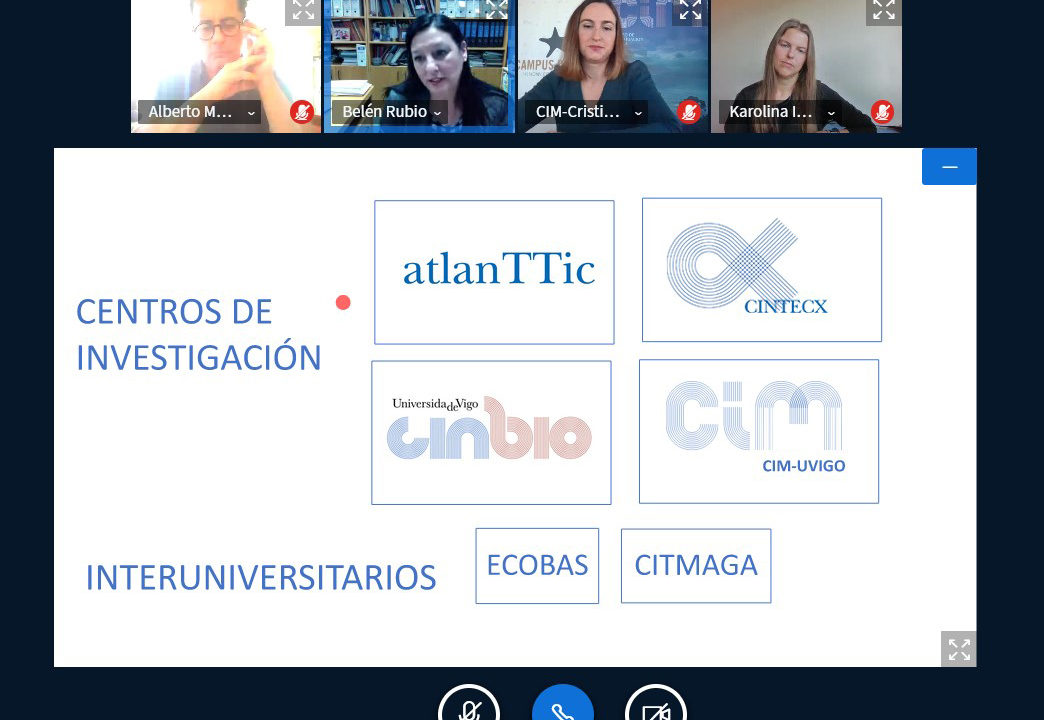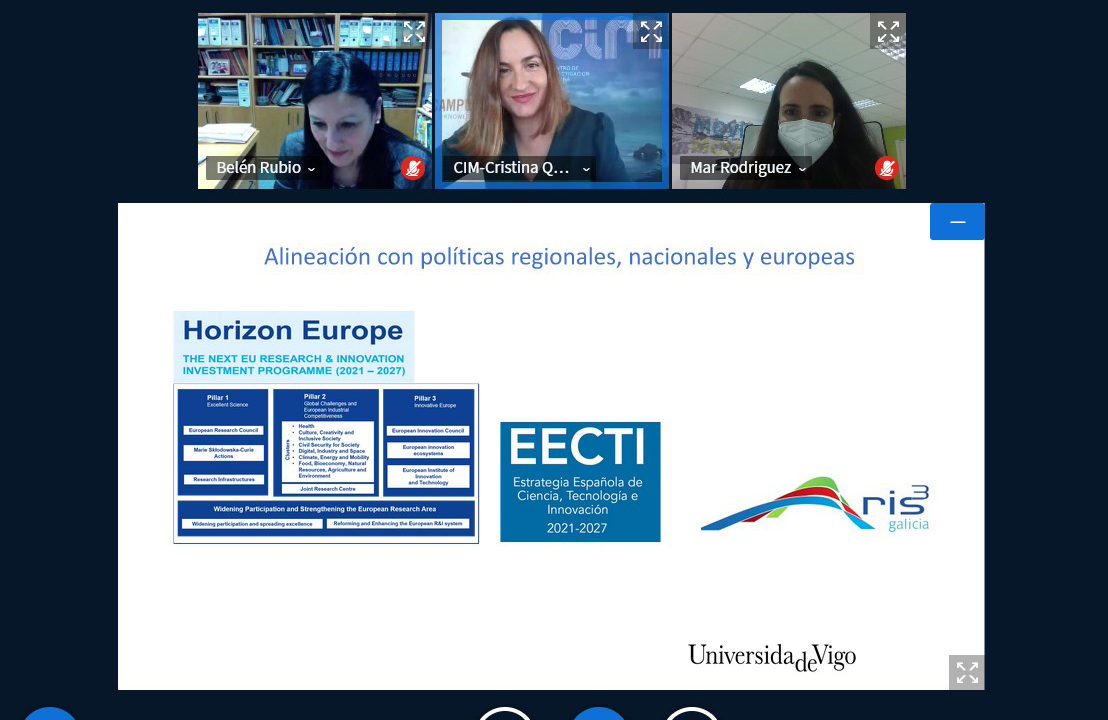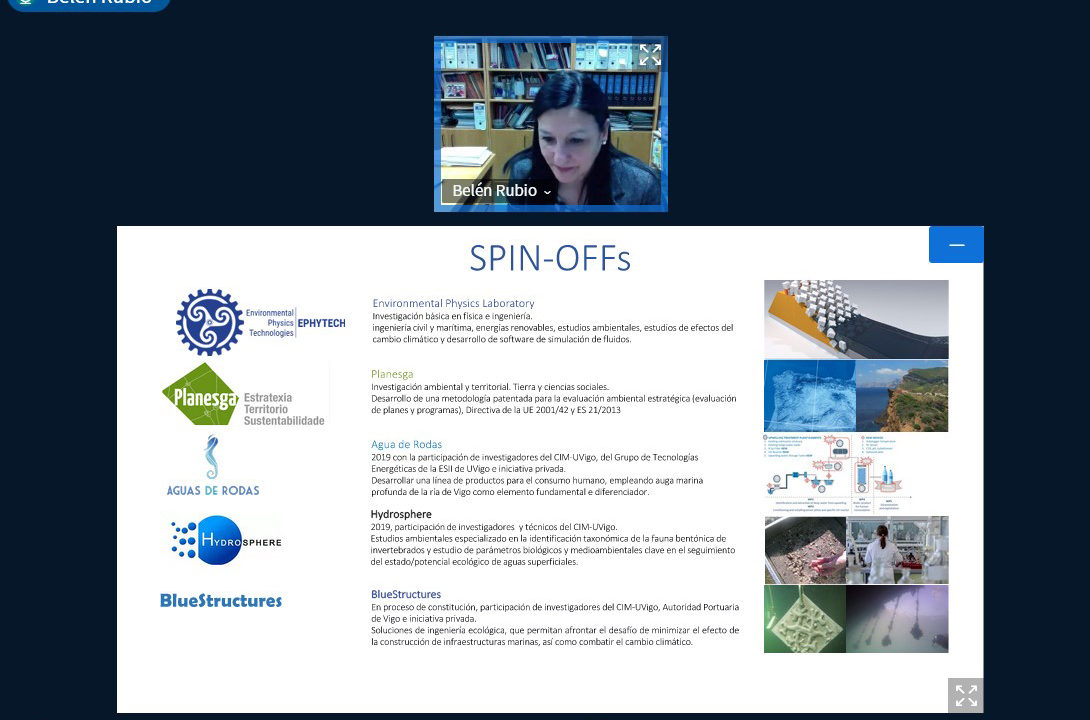The UVigo presented the capacities of the research centers and groups
Put science at the service of society and promote lines of research that serve to solve problems and demands of the productive fabric. This is the objective of knowledge transfer, a path in which the University of Vigo continues to broaden its horizons, this time in the hands of the Kaleido company.
Both entities held this week a meeting organized by Campus del Mar and the Marine Research Center – CIM, to publicize the research staff of UVigo Kaleido Tech, the open innovation ecosystem with which the logistics company works and that can help the academic world to identify industry needs and provide solutions. At the same time, the representatives of the company were also able to familiarize themselves, with the help of the Research Vice-Rector Belén Rubio, with the “capacities of the UVigo research centers and groups, with their main lines of research and potential to carry out research projects of various kinds ”.
The conference, in which 49 people participated, turned away from the sum of “scientific ideas + pilot projects + open innovation = real solutions for the industry”. In this way, both parties were able to study possible concrete ideas with the potential to materialize through an open innovation ecosystem, as a way to reach the buyer.
Strategic Alliances
The intervention of the Vice-Rector for Research focused on showing Kaleido the research potential of UVigo through its groups and groups. Specifically, he presented atlanTTic – research center for Telecommunication Technologies; Cintecx, Center for Research in Technologies, Energy and Industrial Processes; CIM, Center for Marine Research; Cinbio, Center for Biomedical Research; Citmaga – Center for Research and Technology of Mathematics of Galicia; Ecobas, Economics and Business Administration fuere Society and Citaca – Iberian Food Laboratory. It is about, Rubio remarks, “promoting the transfer of the University to companies, in particular with Kaleido, an entity that has a very strong connection with the CIM, with several innovative projects in the marine and aquaculture field, but also logistics projects. in which both atlanTTic and Cintecx, for example, have a very relevant role.” The Vice-Rector emphasized that the new regional, national and European policies (the RIS4 strategy, in the Spanish Strategy for Science, Technology and Innovation 2021-27 and the Horizon Europe program) “promote innovation and the empowerment and promotion of the companies”.
Priority areas of work
Throughout the working day, both the research staff and the company representatives focused on key technologies such as mechanics, artificial intelligence, artificial vision, augmented reality, 3D printing, big data, blockchain, robotics, drones, motor efficiency , nanotechnology, bioTech and industrial automation and mechanization.
Thus, the sectors with potential for these collaborations are telecommunications; logistics and transport, both land, air, sea, warehouse automation, time control, traceability, location systems, etc .; the fishing industry, concerned with new fishing gear, use of by-products, energy efficiency, management software, cold systems, classification systems or commercial management; engineering and construction materials; aquaculture, with regard to production improvements, vaccines, feeding systems, traceability, sub-products, etc .; The habitat; marine biotechnology and energies of marine origin.
Currently, the University of Vigo already maintains a collaboration with Kaleido through the area of Parasitology, of the Department of Functional Biology and Health Sciences, within the framework of which they are working “on a very interesting issue of elimination of Anisakis”, But the idea is “to extend and strengthen collaborations in order to request joint projects and promote future lines of joint development”, as Belén Rubio explains. After the presentation of them and the company, 12 bilateral meetings were held between the staff of Kaleido and the centers and groups of the UVigo from which initiatives of common interest and possible future collaborations emerged.
More information at DUVI





